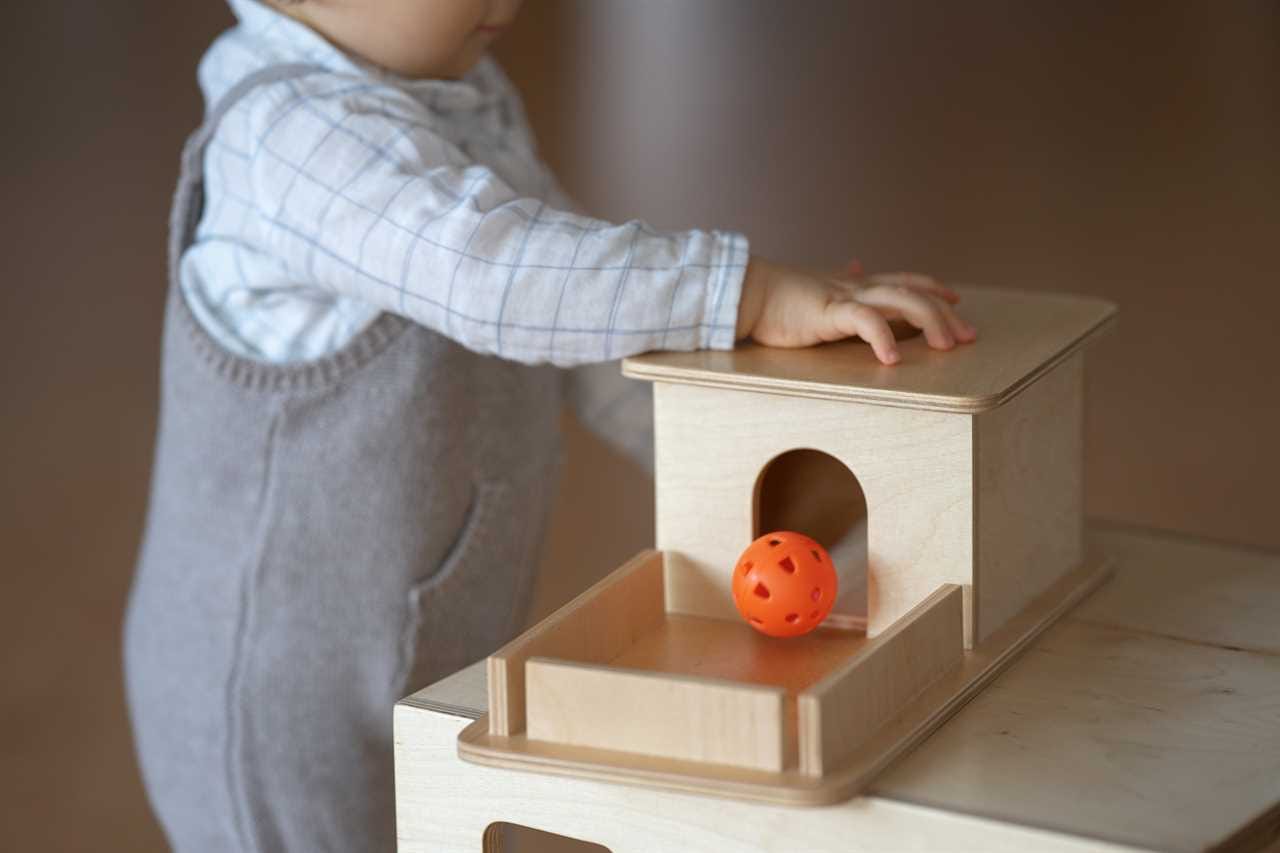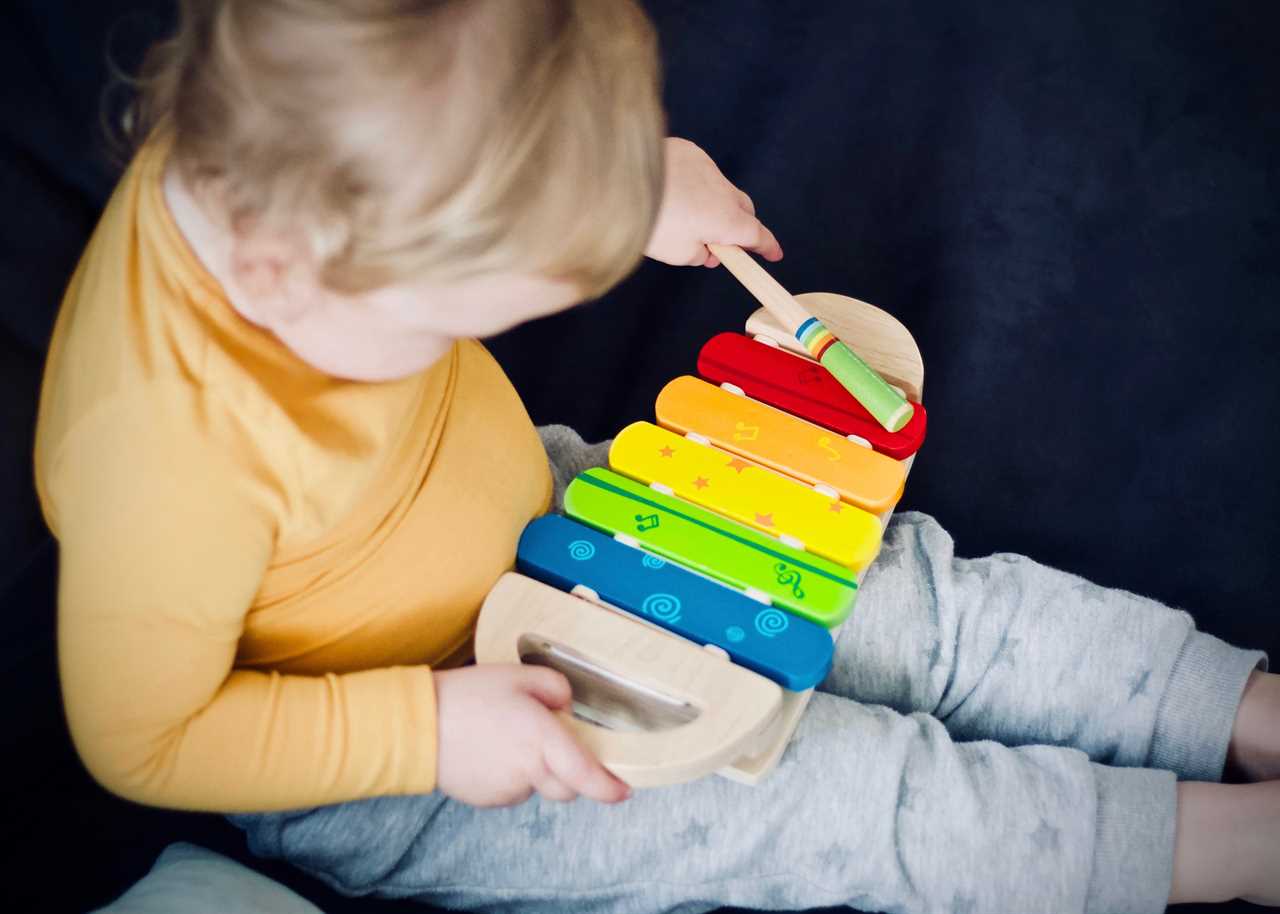In a world where technology reigns supreme, electronic toys and light-up toys have become the go-to choice for many parents. However, it’s important to consider the risks and benefits associated with these flashy playthings.
While they may capture a child’s attention and teach cause and effect relationships, they can also hinder language development, decrease physical activity, and stifle imagination and creativity.
In contrast, traditional toys, like those made from wood, provide tactile stimulation and help develop motor skills. And let’s not forget the importance of arts and crafts, which allow children the freedom to express themselves creatively and develop fine motor skills.
It’s time to delve into the world of electronic toys, light-up toys, and the significance of arts and crafts.

Key Takeaways
- Electronic toys and light-up toys can overstimulate and overwhelm young children, potentially hindering their development in various areas.
- There are risks associated with electronic toys, such as choking hazards and exposure to toxic chemicals, which need to be addressed for child safety.
- Traditional toys offer numerous benefits for child development, including enhancing fine motor skills, promoting imaginative play, and facilitating social interaction.
- Arts and crafts play a crucial role in child development by fostering fine motor skills, enhancing problem-solving and critical thinking, boosting confidence, and providing a creative outlet for self-expression.
Risks of Electronic Toys for Children
Electronic toys can be overstimulating and overwhelming for young children, posing potential risks to their development and well-being. One of the main concerns with electronic toys is the presence of small parts, which can pose choking hazards for children. Poor quality materials used in these toys can also increase the risk of small parts breaking off and becoming a choking hazard.
Additionally, some electronic toys contain plastic components that may contain toxic chemicals, which can be harmful if ingested or if children come into contact with them. It is important for parents to carefully consider the safety of electronic toys before purchasing them for their children, ensuring that they are age-appropriate and free from any potential hazards.
Concerns About Small Parts and Choking Hazards
Small parts and choking hazards are concerns regarding certain types of toys. It is important for parents and caregivers to be aware of these risks and take necessary precautions to ensure the safety of children during playtime.
Small parts, such as buttons or detachable pieces, can pose a choking hazard if swallowed by young children. To prevent accidents, it is crucial to choose age-appropriate toys that do not have small parts that can easily come off.

Additionally, supervision is key when children are playing with toys to prevent any potential harm. By actively monitoring playtime and ensuring that toys are suitable for a child’s age, parents can create a safe environment for their children to explore and play freely without compromising their well-being.
Potential Toxic Chemicals in Plastic Components
Plastic components in certain toys may contain toxic chemicals, raising concerns about potential health risks for children. Research suggests that these toxic chemicals, such as phthalates and bisphenol A (BPA), can leach out of plastic toys and be ingested or absorbed through the skin.
Exposure to these chemicals has been linked to various health issues, including developmental problems, hormonal disruptions, and even certain cancers. The health risks of electronic toys are particularly worrisome, as they often contain numerous plastic components. Children who frequently play with electronic toys may have a higher risk of exposure to these toxic chemicals.
To mitigate these risks, it is important for parents to choose toys made from safer materials, such as BPA-free plastics or natural alternatives like wood. Regularly inspecting toys for signs of wear and tear, and replacing them when necessary, is also crucial in ensuring children’s safety.

Negative Effects of Electronic Toys on Language Development
Excessive exposure to electronic toys can hinder a child’s language development and limit their opportunities for communicative interactions. Research suggests that electronic toys, such as tablets and smartphones, can have negative effects on cognitive development, particularly in the area of language acquisition. These toys often provide instant gratification with pre-programmed sounds and images, which can discourage children from engaging in meaningful conversations and imaginative play.
Parents play a crucial role in mitigating the effects of electronic toys on their child’s language development. By setting limits on screen time and providing alternative activities that promote language skills, such as reading books or engaging in pretend play, parents can help foster healthy cognitive development. Additionally, parents can actively participate in their child’s playtime, encouraging conversations and providing opportunities for language-rich interactions.
It is important for parents to be aware of the potential negative effects of electronic toys on language development and take proactive steps to create a balanced play environment that supports cognitive growth.
Impact of Excessive Electronic Toy Use on Physical Activity
Children who engage in excessive use of electronic toys may experience a decrease in their overall physical activity levels. This can lead to a sedentary lifestyle, which poses various risks to their health and well-being.

Excessive screen time from electronic toys can contribute to a lack of physical activity, as children spend more time sitting and engaging with the device rather than engaging in active play. This sedentary behavior can result in weight gain, muscle weakness, and increased risk of chronic diseases such as obesity and diabetes.
It is important for parents to be mindful of the amount of time their children spend using electronic toys and to encourage alternative activities that promote physical movement and exercise.
Hindrance of Imagination and Creativity by Electronic Toys
Excessive use of electronic toys can have a detrimental effect on a child’s imagination and creativity. When children are constantly engaged with electronic toys that provide pre-programmed sounds, lights, and actions, their ability to think creatively and imagine new scenarios can be limited. These toys restrict a child’s ability to create their own narratives and use their imagination to explore different possibilities.
Research has shown that traditional toys, such as building blocks or dolls, promote open-ended play and encourage children to use their imagination. These toys allow children to create their own stories, problem solve, and explore their creativity. In contrast, electronic toys provide predetermined actions and limit a child’s ability to think outside the box.

It is important for parents and caregivers to provide a balance between electronic toys and activities that foster imagination. Encouraging children to engage in arts and crafts, storytelling, and pretend play can help overcome the limitations imposed by electronic toys and allow their creativity to flourish.
Benefits of Traditional Toys for Motor Skill Development
Wooden blocks and dolls, on the other hand, provide tactile stimulation for motor skill development in young children. These traditional toys offer numerous benefits for sensory exploration and the importance of tactile stimulation.
Enhances motor skills: Playing with wooden blocks and dolls allows children to manipulate objects, improving their fine motor skills. They can grasp, stack, and build, enhancing hand-eye coordination and dexterity.
Stimulates creativity: Traditional toys encourage imaginative play, allowing children to create their own stories and scenarios. This fosters creativity and problem-solving skills as they explore different possibilities.

Promotes social interaction: Playing with these toys often involves collaboration and sharing, promoting social skills and cooperation among children.
Research has shown that incorporating traditional toys like wooden blocks and dolls into a child’s playtime can have a positive impact on their development. These toys provide a hands-on experience that engages their senses and promotes the development of essential motor skills.
Stimulating Senses and Learning With Bright Traditional Toys
Bright traditional toys, such as colorful puzzles and interactive games, can engage a child’s senses and facilitate their learning. Learning through play is an essential part of a child’s development, and traditional toys offer valuable opportunities for sensory exploration.
When children play with these toys, they can touch, feel, and manipulate different textures and shapes, which helps them understand and make sense of the world around them. Traditional toys also promote problem-solving skills and encourage creativity and imagination. By playing with these toys, children learn to think critically, develop fine motor skills, and improve hand-eye coordination.

Additionally, the use of bright colors in traditional toys stimulates visual senses and enhances a child’s ability to perceive and differentiate various colors. Overall, traditional toys provide a holistic learning experience through play and sensory exploration.
Promoting Creativity and Fine Motor Skills Through Arts and Crafts
Engaging in creative activities, such as arts and crafts, can foster children’s fine motor skills and encourage their imaginative expression. Research has shown that promoting creativity through arts and crafts has numerous benefits for children’s development.
Promoting Creativity: Arts and crafts activities provide children with an outlet for their imagination and allow them to explore their creative side. This freedom to express themselves helps enhance their problem-solving skills and critical thinking abilities.
Fine Motor Skills: Activities like cutting, drawing, and painting require precise hand movements, which help develop and strengthen fine motor skills. These skills are crucial for tasks like writing, buttoning clothes, and tying shoelaces.

Confidence and Self-esteem: Engaging in arts and crafts allows children to see their ideas come to life, boosting their confidence and self-esteem. It also provides a sense of accomplishment and pride in their creations.






